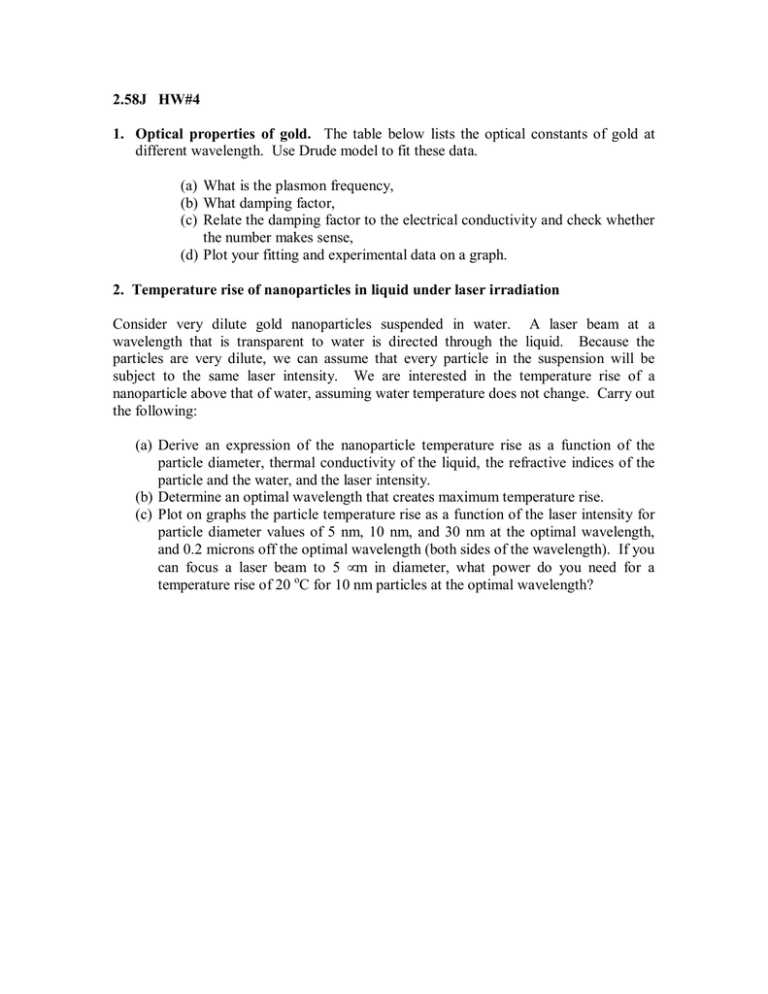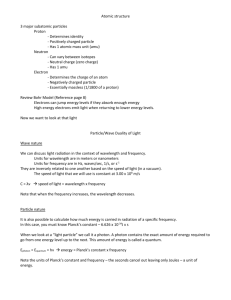2.58J HW#4 1. Optical properties of gold.
advertisement

2.58J HW#4 1. Optical properties of gold. The table below lists the optical constants of gold at different wavelength. Use Drude model to fit these data. (a) What is the plasmon frequency, (b) What damping factor, (c) Relate the damping factor to the electrical conductivity and check whether the number makes sense, (d) Plot your fitting and experimental data on a graph. 2. Temperature rise of nanoparticles in liquid under laser irradiation Consider very dilute gold nanoparticles suspended in water. A laser beam at a wavelength that is transparent to water is directed through the liquid. Because the particles are very dilute, we can assume that every particle in the suspension will be subject to the same laser intensity. We are interested in the temperature rise of a nanoparticle above that of water, assuming water temperature does not change. Carry out the following: (a) Derive an expression of the nanoparticle temperature rise as a function of the particle diameter, thermal conductivity of the liquid, the refractive indices of the particle and the water, and the laser intensity. (b) Determine an optimal wavelength that creates maximum temperature rise. (c) Plot on graphs the particle temperature rise as a function of the laser intensity for particle diameter values of 5 nm, 10 nm, and 30 nm at the optimal wavelength, and 0.2 microns off the optimal wavelength (both sides of the wavelength). If you can focus a laser beam to 5 µm in diameter, what power do you need for a temperature rise of 20 oC for 10 nm particles at the optimal wavelength?



